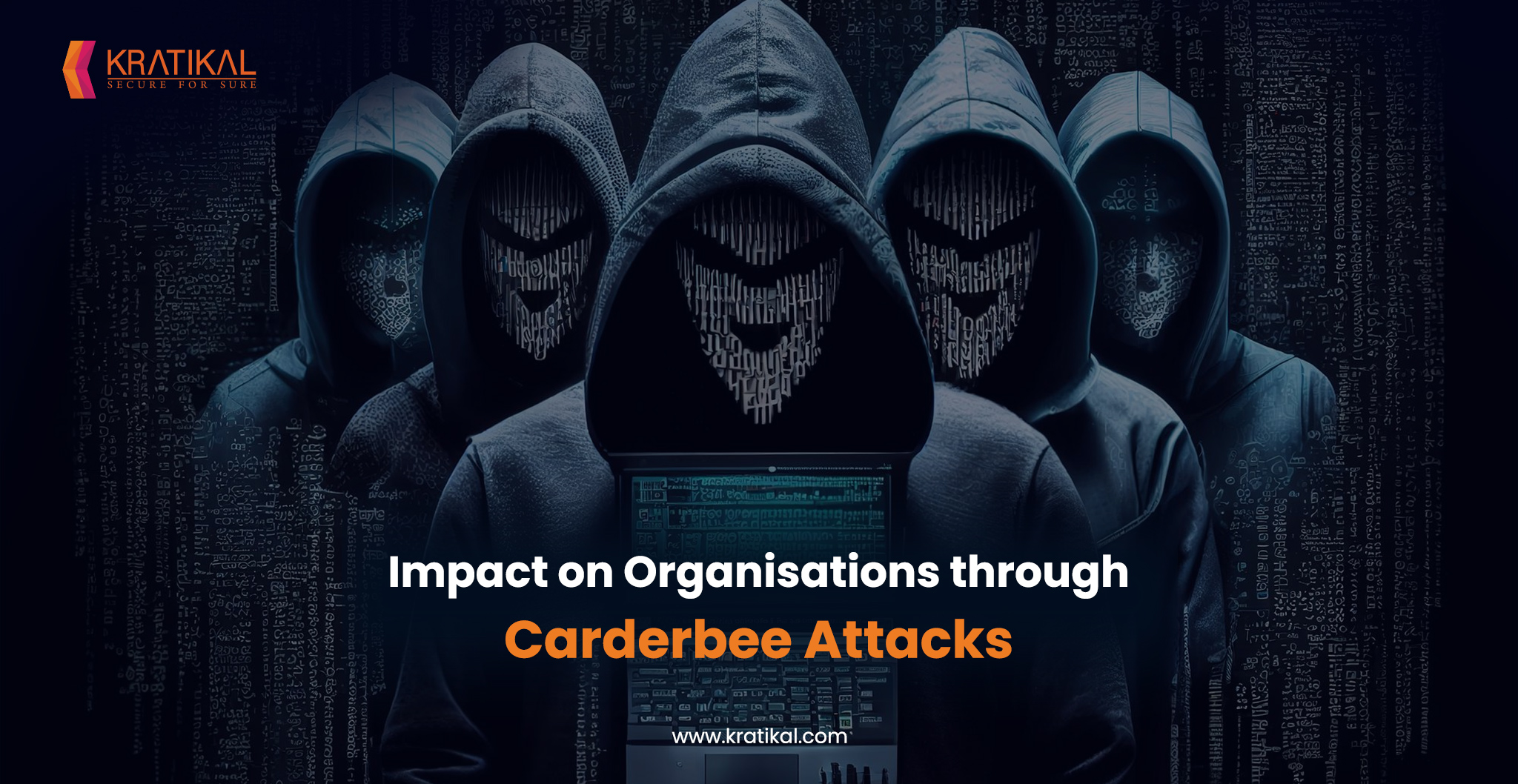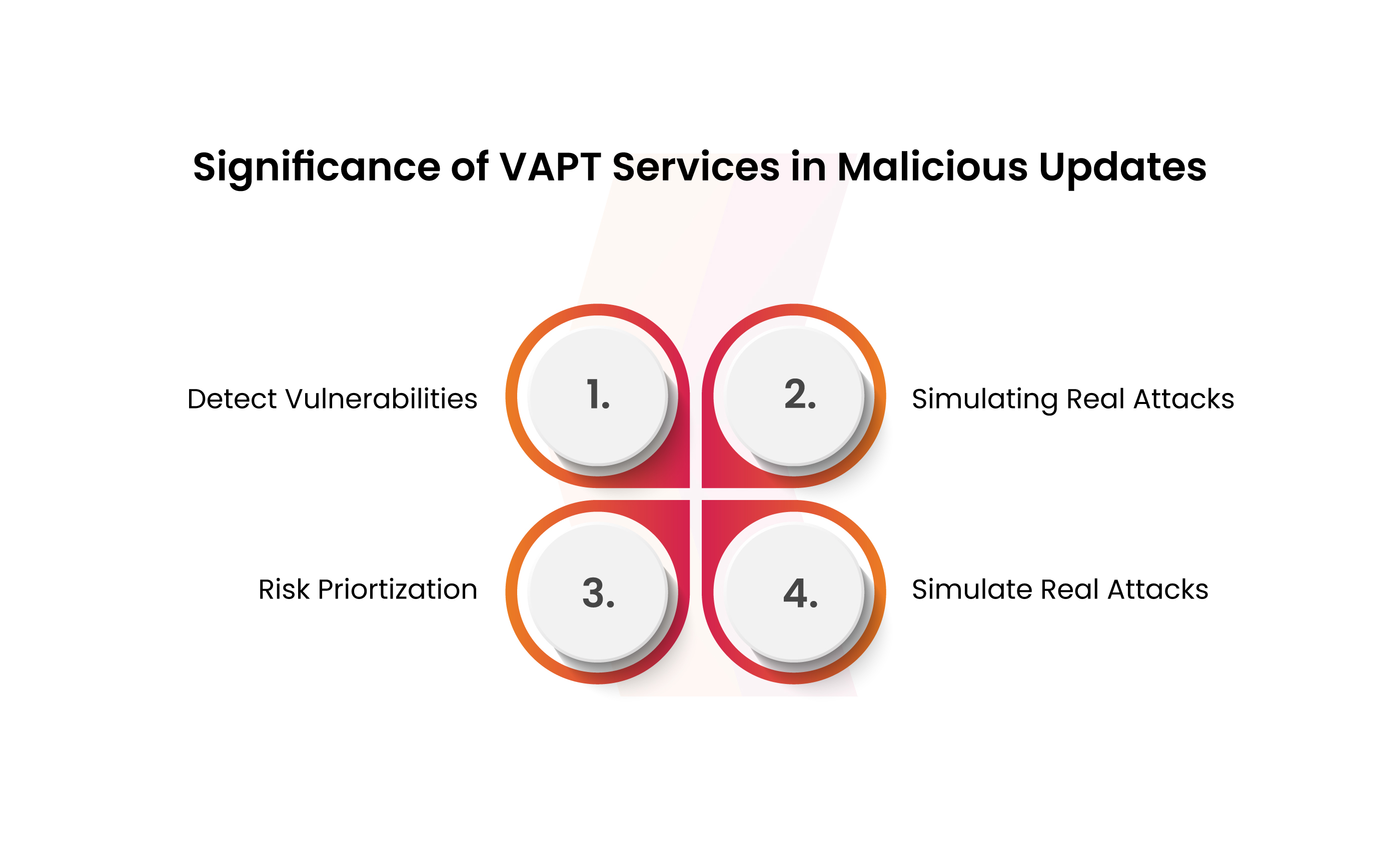
In today’s rapidly evolving digital landscape, cyber threats have become more sophisticated, exploiting vulnerabilities that organizations might not even be aware of. One such avenue that attackers exploit is through malicious update, a method that has recently been exemplified by the Carderbee cyber-attack on organizations primarily located in Hong Kong and Asia. These attacks underscore the critical importance of robust security measures, Compliance and Vulnerability Assessment, and Penetration Testing (VAPT) Services.
In this blog, we will understand how malicious updates have affected organizations, and their businesses and how cyber attacks can be prevented.
Table of Content
Threat Environment and Malicious Update
Malicious software updates have emerged as a potential flaw in the hands of cyber attackers to infiltrate an organization’s software supply chain, injecting malware into seemingly legitimate updates. This allows them to breach networks and deploy malicious payloads, potentially leading to data breaches, financial loss, and reputational damage. The recent Carderbee cyber attack shed light on this threat, demonstrating how a trojanized version of legitimate software was exploited to deliver a known backdoor, PlugX, onto victim networks.
Building Resilience Through Cybersecurity Compliance
Compliance with cybersecurity standards and regulations is a crucial starting point in defending against malicious updates. Organizations adhering to established frameworks, such as ISO 27001 or the NIST Cybersecurity Framework, lay a strong foundation for security. Compliance mandates regular security assessments, risk management, and adherence to best practices. By maintaining compliance, organizations can proactively identify vulnerabilities and implement security controls, reducing the attack surface for malicious updates.
Role of VAPT Services in Malicious Update
VAPT services play a crucial role in proactively identifying, assessing, and prioritizing vulnerabilities, safeguarding organizations against exploiting malicious updates.
Detecting Vulnerabilities
Penetration Testing plays a pivotal role in identifying potential entry points for attackers. Regular vulnerability assessments scrutinize software and systems and detect risks that malicious updates could exploit. This detection ensures that vulnerabilities are addressed before they can be leveraged by cyber attackers
Simulating Real Attacks
Penetration testing, a key component of VAPT, replicates real-world attacks to assess an organization’s preparedness. By simulating the exploitation of vulnerabilities, organizations can gauge the effectiveness of their security measures against malicious updates.
Risk Prioritization
Penetration testing helps organizations prioritize vulnerabilities that could be targeted through malicious updates. This targeted approach ensures that limited resources are allocated where they matter most.
Regular Assessments
As the threat landscape evolves, regular VAPT assessments keep organizations updated on emerging vulnerabilities. This proactive approach helps prevent successful attacks via malicious updates.

Impact Of Malicious Updates
- Malicious updates can lead to data breaches, compromise sensitive information, and expose customers and employees to identity theft.
- Organizations could suffer financial losses through theft or fraud, causing severe damage to their operations.
- Malicious updates can disrupt operations, leading to downtime and loss of productivity.
- Businesses risk losing valuable intellectual property to cybercriminals who exploit vulnerabilities through malicious updates.
- Businesses risk losing valuable intellectual property to cyber attackers who exploit vulnerabilities through malicious updates.
Book a Free Consultation with our Cyber Security Experts

Strategies for Mitigating Malicious Update
- Verify the authenticity of software updates by directly accessing the vendor’s official website. Refrain from selecting links found in unexpected emails or pop-up messages.
- Organizations should implement secure coding practices to prevent vulnerabilities that attackers can exploit during development.
- Regularly assess and monitor third-party components used in software development. Verify the security posture of your vendors.
- Educate employees about the risks of downloading updates from unverified sources. Teach them to recognize phishing attempts and suspicious messages.
- Promptly apply legitimate software updates to minimize the potential impact of zero-day vulnerabilities. Keep systems and applications up to date.
- Isolate critical systems and sensitive data to limit the potential impact of a successful attack on less crucial parts of the network.
- Employ advanced cybersecurity tools that can detect unusual behavior, such as unexpected network traffic or unauthorized system changes.
Conclusion
The Carderbee cyber attack serves as a stark reminder that malicious updates pose a significant threat to organizations across industries. Safeguarding against such threats requires a multifaceted approach that encompasses compliance, pen-testing services, and a commitment to staying informed about emerging vulnerabilities. By adhering to cybersecurity standards, conducting thorough vulnerability assessments, and proactively simulating real attacks, organizations can bolster their defenses against malicious updates and other evolving cyber threats.
Adopting compliance measures and utilizing pen-testing services goes beyond being a choice; it’s an imperative requirement to guarantee the security and fortitude of organizations amid the ever-evolving threat environment.


